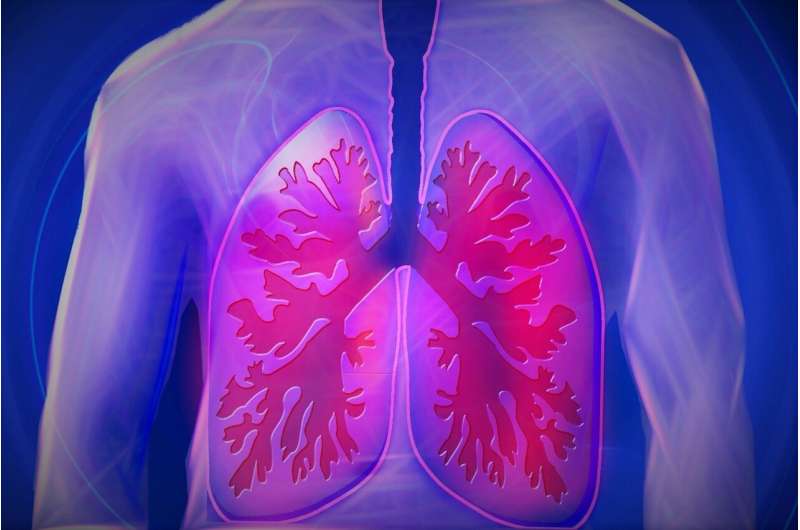This article has been reviewed according to Science X's editorial process and policies. Editors have highlighted the following attributes while ensuring the content's credibility:
fact-checked
peer-reviewed publication
trusted source
proofread
Study reveals role of neutrophil lipid transfer in lung cancer transition

Phenotypic plasticity is a cancer hallmark, and lung adeno-to-squamous transition (AST) triggered by LKB1 inactivation is significantly associated with drug resistance. Clinical data show that squamous transition occurs in certain lung adenocarcinoma patients who relapse from targeted therapy using EGFR tyrosine-kinase inhibitors (TKIs) or KRAS inhibitor. However, the epigenetic regulatory mechanisms involved in AST remain largely unknown.
In a study published
in the Journal of Experimental Medicine, researchers led by Prof. Ji Hongbin from the Center for Excellence in Molecular Cell Science, Shanghai Institute of Biochemistry and Cell Biology of the Chinese Academy of Sciences, together with Prof. Ye Dan from Shanghai Medical College of Fudan University, report that the TET2-STAT3-CXCL5 nexus promotes neutrophil lipid transfer to fuel lung adeno-to-squamous transition. Through the analyses of genetically-engineered mouse models and clinical specimens, researchers found that Tet2 knockout in KrasG12D;Lkb1-/- (KL) model dramatically suppresses squamous transition through immune microenvironment remodeling, e.g., reducing neutrophil infiltration. They demonstrate that TET2 is recruited to Cxcl5 promoter region via the interaction with STAT3, which results in Cxcl5 promoter demethylation and
Additionally, researchers found that these KL tumor-infiltrated neutrophils are laden with lipids, mainly triacylglycerol (TG). When co-cultured with neutrophils, the KL tumor cells are able to take up the lipid from neutrophils which promotes cancer cell proliferation.
These in vitro findings were confirmed in KL mouse models, highlighting the importance of lipid transfer from neutrophils to cancer cells in driving AST and cell proliferation.
Moreover, researchers proposed three-layer strategies to control the AST process, e.g., targeting STAT3 activation, reducing CXCL5 level or blocking lipid transfer. When treated with JAK-STAT3 inhibitor Ruxolitinib, CXCL5-neutralizing antibody or lipid-blockage compound (EIPA), squamous transition is dramatically inhibited in the mouse model. These data identified the therapeutic vulnerability of KL lung cancer.
This study uncovers an epigenetic mechanism orchestrating phenotypic plasticity through regulating immune microenvironment and metabolic communication, and identifies therapeutic strategies to inhibit AST.
More information: Yun Xue et al, TET2–STAT3–CXCL5 nexus promotes neutrophil lipid transfer to fuel lung adeno-to-squamous transition, Journal of Experimental Medicine (2024). DOI: 10.1084/jem.20240111



















